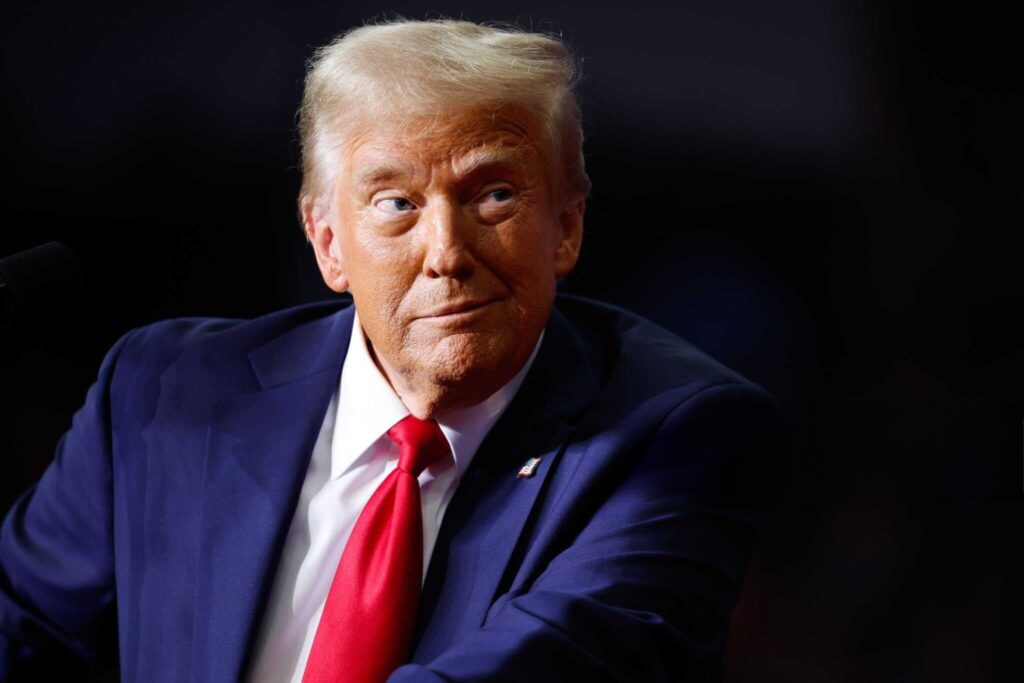Former U.S. President Donald Trump has approved a 90-day suspension of tariffs on goods from most countries, with one major exception: China. The pause, announced late Tuesday on Trump’s social platform, Truth Social, excludes Chinese imports, which will now face a sharp 125% tariff. Trump said the move targets China’s “disrespect for global markets” and aims to push for fairer global trade.
According to the White House, the tariff pause is designed to help nations that are actively working on new trade agreements with the United States. During this period, imports from participating countries will be subject to a flat 10% tariff instead of previous rates. The announcement sparked a wave of optimism among investors, sending the Dow Jones Industrial Average soaring by over 2,000 points within minutes.
Sharp Penalties for China, Incentives for Trade Partners
The new trade policy took effect just after midnight. While most countries benefit from the temporary tariff relief, China was hit with a new import duty of 125%. Other countries saw moderate increases. The European Union now faces a 20% tariff, Japan 24%, and South Korea 25%.
Trump explained that the new structure is meant to reward trade partners who engage fairly and punish those who don’t. “We’re resetting the rules to make trade fair again,” he stated. The administration also called on allied nations to speed up negotiations and avoid long-term disruptions.
“We want deals that work for both sides, but especially for America,” said a senior U.S. trade official.
Officials emphasized that tariffs are subject to change depending on the progress of ongoing talks. However, any future adjustments may take months to finalize.
White House Seeks to Calm Economic Fears
In response to growing questions, U.S. officials assured business leaders and the public that the government remains open to revisiting trade terms. Republican lawmakers have asked for more details on how the changes could affect local jobs and industries.
Business groups from sectors like technology, agriculture, and manufacturing have asked for clearer timelines and possible exemptions. Many fear that even short-term uncertainty could disrupt supply chains.
Despite concerns, the White House framed the policy as a push to strengthen American industries and reduce trade imbalances. Officials noted that while the approach may seem aggressive, it is part of a longer-term strategy to build a more balanced global economy.
“This is not about isolation,” one spokesperson said. “It’s about fair play.”
Economic Reactions and Market Surge
Markets reacted swiftly to the announcement. The Dow Jones Industrial Average climbed more than 2,000 points, marking one of the biggest one-day jumps in recent memory. Analysts linked the surge to investor optimism about potential new trade deals and clearer trade rules.
The S&P 500 and Nasdaq also saw gains, as companies with international supply chains responded to the broader tariff pause. However, economists warn that the full effects of the policy may not be clear for several weeks.
Some financial experts have voiced concern about the high rate on Chinese imports, calling it a potential risk to global supply chains. But supporters argue that China’s trade practices have long gone unchecked and that this move sends a clear message.
With talks underway, many countries are racing to secure new agreements with Washington before the 90-day window closes. U.S. officials said no nation is permanently excluded and all have a chance to reduce tariffs by showing goodwill at the negotiation table.
